-
 Bitcoin
Bitcoin $83,649.7703
-1.06% -
 Ethereum
Ethereum $1,818.4708
-2.72% -
 Tether USDt
Tether USDt $1.0000
0.01% -
 XRP
XRP $2.0495
-3.21% -
 BNB
BNB $597.8591
-1.20% -
 Solana
Solana $118.6021
-5.26% -
 USDC
USDC $1.0000
0.01% -
 Dogecoin
Dogecoin $0.1642
-3.52% -
 Cardano
Cardano $0.6526
-2.99% -
 TRON
TRON $0.2343
-0.56% -
 Toncoin
Toncoin $3.7346
-7.00% -
 UNUS SED LEO
UNUS SED LEO $9.4260
0.63% -
 Chainlink
Chainlink $12.9796
-3.63% -
 Stellar
Stellar $0.2617
-1.79% -
 Avalanche
Avalanche $18.3920
-4.15% -
 Sui
Sui $2.3105
-2.61% -
 Shiba Inu
Shiba Inu $0.0...01222
-0.74% -
 Hedera
Hedera $0.1630
-1.67% -
 Litecoin
Litecoin $83.6143
1.85% -
 Polkadot
Polkadot $4.0068
-2.05% -
 MANTRA
MANTRA $6.3564
2.37% -
 Bitcoin Cash
Bitcoin Cash $306.7380
0.76% -
 Bitget Token
Bitget Token $4.5736
-0.36% -
 Dai
Dai $1.0001
0.01% -
 Ethena USDe
Ethena USDe $0.9998
0.00% -
 Pi
Pi $0.6284
-6.81% -
 Hyperliquid
Hyperliquid $11.9330
-10.11% -
 Monero
Monero $213.7810
-0.49% -
 Uniswap
Uniswap $5.9757
-2.02% -
 Aptos
Aptos $5.2294
-1.01%
In what aspects is Chainlink decentralized?
Chainlink's decentralization is achieved through diverse node operators, multiple consensus mechanisms, a community-driven governance model, and broad data source integration, ensuring security and scalability.
Apr 02, 2025 at 05:49 pm
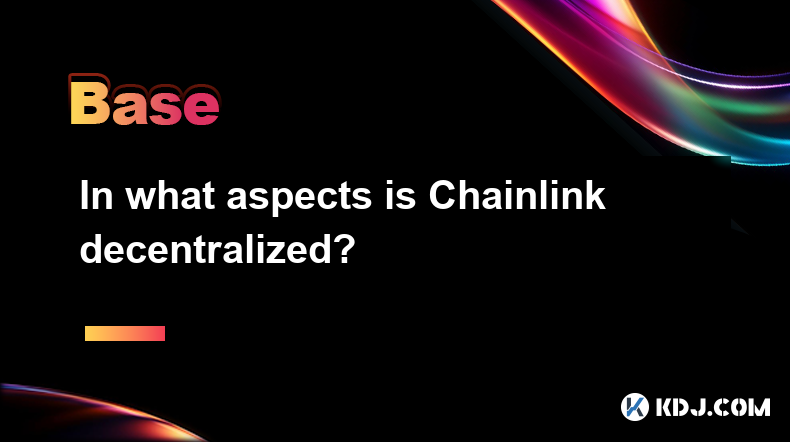
Chainlink is a decentralized oracle network that plays a crucial role in connecting smart contracts on blockchain networks with real-world data. Its decentralization is reflected in multiple aspects, ensuring the network's security, reliability, and integrity. This article delves into the various ways Chainlink achieves decentralization, including its node operator structure, consensus mechanisms, and governance model.
Node Operator Decentralization
Chainlink's decentralization starts with its node operators. These are independent entities responsible for fetching, validating, and delivering external data to smart contracts. The network's strength lies in its diverse and geographically dispersed node operators, which reduces the risk of a single point of failure.
- Node operators can be anyone from individuals to large organizations, ensuring a broad base of participation.
- Incentives are provided to node operators in the form of LINK tokens, encouraging more participants to join and maintain the network.
- Reputation systems are in place to evaluate the performance and reliability of node operators, fostering a competitive environment that drives quality and accuracy.
Consensus Mechanisms
Chainlink employs multiple consensus mechanisms to ensure the integrity and reliability of the data it provides. These mechanisms are crucial for maintaining decentralization and preventing manipulation.
- Aggregating data from multiple sources helps to mitigate the risk of data manipulation. By cross-referencing information from various node operators, Chainlink ensures the data's accuracy.
- Staking mechanisms require node operators to stake LINK tokens as a form of collateral. This incentivizes honest behavior, as operators risk losing their stake if they provide false data.
- Decentralized oracle networks (DONs) further enhance consensus by allowing multiple oracles to work together to validate data, ensuring no single entity can control the outcome.
Governance Model
Chainlink's governance model is another critical aspect of its decentralization. It ensures that the network remains community-driven and resistant to centralized control.
- The Chainlink community plays a significant role in decision-making processes. Proposals and updates are often discussed and voted on by the community, ensuring that changes reflect the collective will.
- The Chainlink Association oversees the protocol's development but does not have unilateral control. It works in tandem with the community to guide the network's direction.
- LINK token holders have a say in governance decisions, further decentralizing control and ensuring that those with a stake in the network's success have a voice.
Data Source Decentralization
Another key aspect of Chainlink's decentralization is its approach to data sources. By integrating data from a wide array of providers, Chainlink ensures that its oracle services are not reliant on a single source.
- Multiple data providers contribute to the network, reducing the risk of data monopolies and ensuring a more resilient and reliable data feed.
- API integration allows Chainlink to connect with various external APIs, broadening the scope of data it can access and provide to smart contracts.
- Data validation protocols ensure that the information from different sources is cross-checked and verified, maintaining the integrity of the data supplied to blockchain networks.
Security and Trust
Chainlink's decentralized structure also enhances its security and trustworthiness. By distributing trust across numerous node operators and data sources, the network minimizes the risks associated with centralized systems.
- Cryptographic security measures are employed to protect data integrity and confidentiality during transmission.
- Regular audits and security assessments are conducted to identify and mitigate potential vulnerabilities, ensuring the network remains robust against attacks.
- Decentralized trust means that no single entity controls the data flow, reducing the risk of manipulation and increasing the network's overall reliability.
Scalability and Flexibility
Chainlink's decentralized architecture also contributes to its scalability and flexibility. The network can adapt to the growing demands of the blockchain ecosystem without compromising its decentralized nature.
- Scalable node infrastructure allows for the addition of more node operators as the network grows, ensuring that it can handle increasing data requests.
- Flexible integration with various blockchains and smart contract platforms means that Chainlink can serve a wide range of applications, from DeFi to supply chain management.
- Modular design enables the network to evolve and incorporate new features and improvements without disrupting existing services, maintaining its decentralized ethos.
Economic Incentives
The economic model of Chainlink is designed to promote and sustain its decentralized nature. By leveraging LINK tokens, the network creates a self-sustaining ecosystem that encourages participation and integrity.
- LINK token rewards incentivize node operators to provide accurate and timely data, fostering a competitive environment.
- Staking and slashing mechanisms ensure that node operators have a financial stake in the network's success, encouraging them to act in the network's best interest.
- Decentralized finance (DeFi) integration allows LINK tokens to be used in various DeFi applications, further embedding the token into the broader cryptocurrency ecosystem and enhancing its utility.
Community Engagement
Chainlink's decentralized approach extends to its community engagement efforts. By fostering an active and involved community, the network ensures that it remains responsive to the needs and concerns of its users.
- Regular community updates keep users informed about the network's developments and upcoming features, fostering transparency and trust.
- Hackathons and developer programs encourage innovation and participation, helping to expand the network's capabilities and applications.
- Social media and forums provide platforms for users to discuss and contribute to the network's growth, ensuring that the community remains at the heart of Chainlink's decentralized model.
FAQs
Q: What is Chainlink's primary function in the blockchain ecosystem?
A: Chainlink serves as a decentralized oracle network, connecting smart contracts with real-world data. It enables smart contracts to access external information, making them more versatile and applicable to real-world scenarios.
Q: How does Chainlink ensure the accuracy of the data it provides?
A: Chainlink ensures data accuracy through multiple consensus mechanisms, including aggregating data from various sources, staking mechanisms, and decentralized oracle networks. These methods help validate and verify the data before it reaches smart contracts.
Q: Who can become a Chainlink node operator?
A: Anyone can become a Chainlink node operator, from individuals to large organizations. The network encourages broad participation to enhance its decentralization and resilience.
Q: What role do LINK tokens play in Chainlink's ecosystem?
A: LINK tokens are used to incentivize node operators, as rewards for providing accurate data. They also serve as a form of collateral in staking mechanisms, ensuring the integrity of the network. Additionally, LINK tokens are used in various DeFi applications, enhancing their utility within the broader cryptocurrency ecosystem.
Q: How is governance handled in Chainlink?
A: Governance in Chainlink is community-driven, with the Chainlink Association working alongside the community to guide the network's direction. LINK token holders also have a say in governance decisions, ensuring decentralized control.
Q: What measures does Chainlink take to ensure security?
A: Chainlink employs cryptographic security measures, regular audits, and decentralized trust to ensure the network's security. By distributing trust across numerous node operators and data sources, the network minimizes the risks associated with centralized systems.
Q: How does Chainlink's decentralization contribute to its scalability?
A: Chainlink's decentralized architecture allows for scalable node infrastructure, enabling the addition of more node operators as the network grows. This scalability ensures that the network can handle increasing data requests without compromising its decentralized nature.
Q: What role does the Chainlink community play in the network's development?
A: The Chainlink community is actively involved in the network's development through regular updates, hackathons, developer programs, and discussions on social media and forums. This engagement ensures that the network remains responsive to the needs and concerns of its users, fostering a decentralized and community-driven approach.
Disclaimer:info@kdj.com
The information provided is not trading advice. kdj.com does not assume any responsibility for any investments made based on the information provided in this article. Cryptocurrencies are highly volatile and it is highly recommended that you invest with caution after thorough research!
If you believe that the content used on this website infringes your copyright, please contact us immediately (info@kdj.com) and we will delete it promptly.
- Ernst & Young (EY) Unveils Nightfall_4, a Zero-Knowledge (ZK) Rollup Architecture
- 2025-04-03 16:45:13
- Investing in racehorses has traditionally been the preserve of the super wealthy and elite
- 2025-04-03 16:45:13
- Bitcoin price struggles on its daily charts as crypto market liquidations cross $500M.
- 2025-04-03 16:40:12
- TRON Founder Justin Sun Accuses First Digital Trust (FDT) of Insolvency
- 2025-04-03 16:40:12
- Coin Master Free Spins Links April 3, 2025
- 2025-04-03 16:35:13
- Ripple Integrates Its Newly Released Stablecoin RLUSD into Its Flagship Payments Solution
- 2025-04-03 16:35:13
Related knowledge

Why can the inverted hammer shape appear at the bottom be used as a reversal signal?
Apr 03,2025 at 04:07pm
Inverted Hammer is a common K-line pattern in technical analysis, and is often regarded as a potential reversal signal when it appears at the bottom. This article will explore in detail why an inverted hammer line may be a reversal signal when it appears at the bottom, and provide specific identification and application methods. Basic characteristics of...
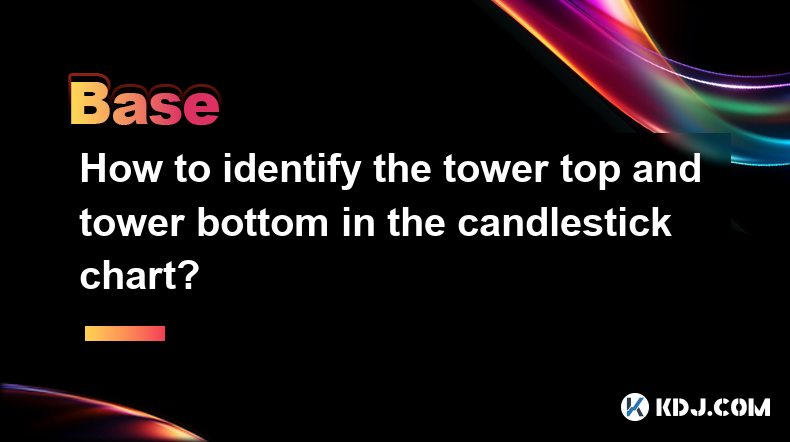
How to identify the tower top and tower bottom in the candlestick chart?
Apr 03,2025 at 04:03pm
In K-line chart analysis, 'Tower Top' and 'Tower Bottom' are two important reversal patterns and are usually used to predict changes in price trends. Identifying these patterns requires careful observation of the price trend and the pattern characteristics of the K-line. Below we will introduce in detail how to identify the 'tower to...
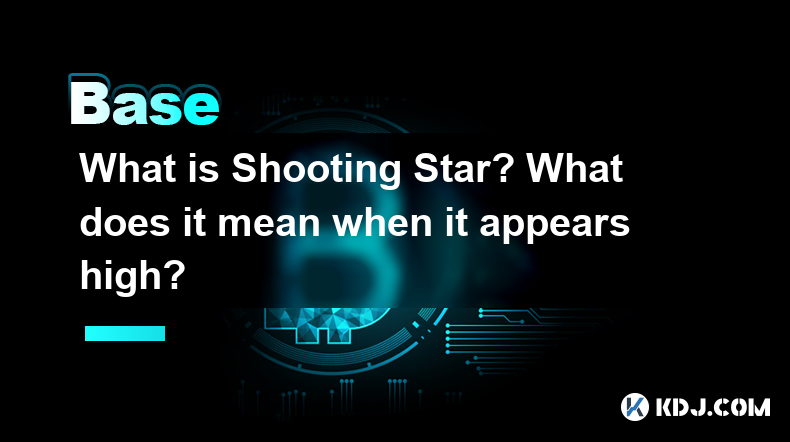
What is Shooting Star? What does it mean when it appears high?
Apr 03,2025 at 03:56pm
In cryptocurrency trading, technical analysis is an important tool to help traders predict future trends of the market. Among them, Shooting Star is a common bearish reversal pattern. This article will give you more details on what 'Shooting Star' is and what it means when it appears at a high level. The definition of 'Shooting Star'Shoo...

What is the difference between dark cloud cover and piercing shape?
Apr 03,2025 at 03:50pm
In the world of cryptocurrency trading, technical analysis is one of the important tools traders use to predict market trends and make trading decisions. Among them, 'Dark Cloud Cover' and 'Piercing Pattern' are two common reversal patterns, which have specific appearance and meaning on the K-line chart. Although they seem similar, there...
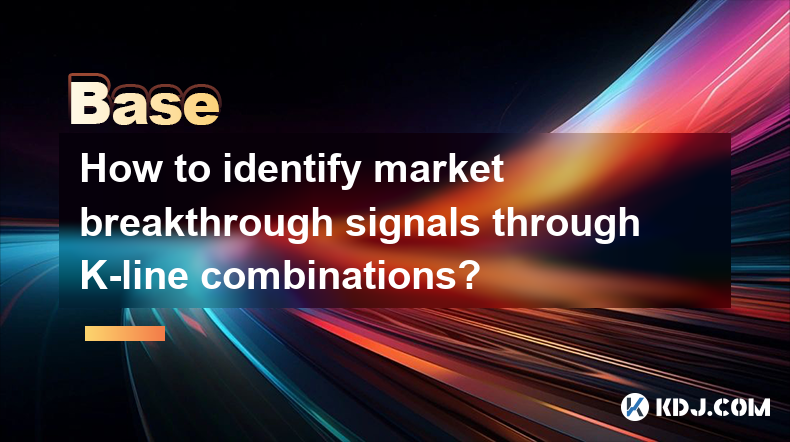
How to identify market breakthrough signals through K-line combinations?
Apr 03,2025 at 03:46pm
In cryptocurrency markets, identifying breakthrough signals is crucial for traders. K-line chart is a commonly used technical analysis tool. By analyzing K-line combinations, traders can more accurately identify the market's breakthrough signals. This article will introduce in detail how to identify the breakthrough signals of the market through the...
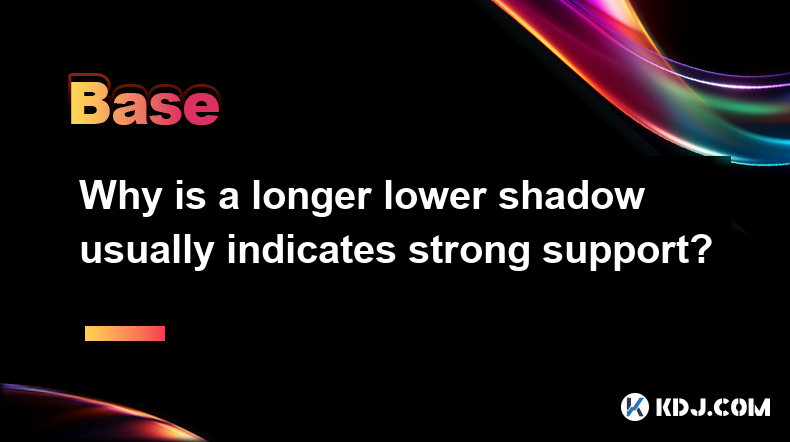
Why is a longer lower shadow usually indicates strong support?
Apr 03,2025 at 03:43pm
The long lower shadow is an important form in technical analysis and is often used by investors to judge the strength of the market's support. The long lower shadow refers to the fact that the lower shadow of a certain K-line is significantly longer than the solid part and the upper shadow in the K-line chart. This pattern usually means that at a ce...

Why can the inverted hammer shape appear at the bottom be used as a reversal signal?
Apr 03,2025 at 04:07pm
Inverted Hammer is a common K-line pattern in technical analysis, and is often regarded as a potential reversal signal when it appears at the bottom. This article will explore in detail why an inverted hammer line may be a reversal signal when it appears at the bottom, and provide specific identification and application methods. Basic characteristics of...

How to identify the tower top and tower bottom in the candlestick chart?
Apr 03,2025 at 04:03pm
In K-line chart analysis, 'Tower Top' and 'Tower Bottom' are two important reversal patterns and are usually used to predict changes in price trends. Identifying these patterns requires careful observation of the price trend and the pattern characteristics of the K-line. Below we will introduce in detail how to identify the 'tower to...

What is Shooting Star? What does it mean when it appears high?
Apr 03,2025 at 03:56pm
In cryptocurrency trading, technical analysis is an important tool to help traders predict future trends of the market. Among them, Shooting Star is a common bearish reversal pattern. This article will give you more details on what 'Shooting Star' is and what it means when it appears at a high level. The definition of 'Shooting Star'Shoo...

What is the difference between dark cloud cover and piercing shape?
Apr 03,2025 at 03:50pm
In the world of cryptocurrency trading, technical analysis is one of the important tools traders use to predict market trends and make trading decisions. Among them, 'Dark Cloud Cover' and 'Piercing Pattern' are two common reversal patterns, which have specific appearance and meaning on the K-line chart. Although they seem similar, there...

How to identify market breakthrough signals through K-line combinations?
Apr 03,2025 at 03:46pm
In cryptocurrency markets, identifying breakthrough signals is crucial for traders. K-line chart is a commonly used technical analysis tool. By analyzing K-line combinations, traders can more accurately identify the market's breakthrough signals. This article will introduce in detail how to identify the breakthrough signals of the market through the...

Why is a longer lower shadow usually indicates strong support?
Apr 03,2025 at 03:43pm
The long lower shadow is an important form in technical analysis and is often used by investors to judge the strength of the market's support. The long lower shadow refers to the fact that the lower shadow of a certain K-line is significantly longer than the solid part and the upper shadow in the K-line chart. This pattern usually means that at a ce...
See all articles























































































